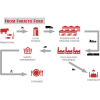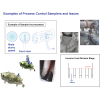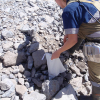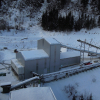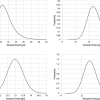Articles and Columns
Claudia Paoletti
Program Manager, Transformation Unit - TS, European Food Safety Authority – EFSA, Via Carlo Magno 1/A, 43100 Parma, Italy
Philippe Davin
Sales Manager, Bulk Solids DPT, Iteca Socadei, Aix-en-Provence, France
Dominique François-Bongarçon
Agoratek International Consultants, Inc.
Introduction
The objective of this contribution is not to add to an already large list of horror examples of hidden economic losses, but rather to raise a cry of alarm about what is experienced as a classical denial of cost-consequential sampling recommendations. A couple of real-world examples borrowed from the mining industry will almost tell the story by themselves.
Oscar Dominguez
Global Principal Geoscientist QAQC, Resource Centre of Excellence, BHP
D. Aldwin Vogel
Technical & Quality Director, Commodities Global Service Lines, Bureau Veritas, Rotterdam, the Netherlands

Simon Dominy
Camborne School of Mines, Cornwall, UK and Novo Resources Corporation, Perth, Western Australia
Gold segregation in pulps
An underground narrow gold vein (1–2 m width) operation was known to contain coarse gold particles up to 1.2 mm in size, and rarely up to 4 mm. The vein had an average global reserve grade of 17 g/t Au. Monthly reconciliations were up to ±50 % on grade.
Chris Robben
SIX-S GmbH, Hinter der Kirche 1A, 22880 Wedel, Germany
This example originates from the mining industry with some parallels to the previous exploration example.
Quentin Dehaine
Senior Researcher at the Geological Survey of Finland (GTK), Circular Raw Material Hub (Vuorimiehentie 2) 02151, Espoo, Finland
Li Huachang and Zhu Mingwei
BGRIMM MTC Technology Co. Ltd, China
Martin Lischka
HERZOG Maschinenfabrik GmbH & Co. KG, Germany
Ralph Holmes
Honorary Fellow, CSIRO Mineral Resources, Australia
Case 1. Even a small sampling bias can have a BIG negative economic consequence
Poor sampling procedures for iron ore can lead to preferential exclusion of coarser high grade particles from shipment samples for analysis due to cutter apertures that are too small or cutter speeds that are too high. This leads to a negative bias on Fe content—the result is that shipments are also carrying away substantial lost revenues!
Pedro Carrasco, Pablo Carrasco and Eduardo Jara
Incorrect sampling operations cause huge economic losses to the mining industry, here illustrated by three industrial cases, which also show that when the Theory of Sampling (TOS) is applied correctly (ensuring unbiased sam-pling and analysis), considerable amounts of money can be saved.
Case 1
Sampling density influences the estimated value of mining plan alternatives
Kim H. Esbensen
Independent researcher, consultant, owner, KHE Consulting, Copenhagen
Abel Arkenbout
ToxicoWatch Foundation, Harlingen, The Netherlands
Geoff Lyman
Materials Sampling & Consulting. [email protected]
Elke Thisted
PhD, Manager Process Control & Development On-Line Analysis, Glencore Nikkelverk AS; Head of organisational committee for WCSB10
Pentti Minkkinen
Professor emeritus, Lappeenranta Lahti University of technology (LUT), Finland and President, Senior Consultant, Sirpeka Oy, Finland
Richard C.A. Minnitt
Visiting Emeritus Professor, University of the Witwatersrand, Johannesburg, South Africa
Kim H. Esbensen
KHE Consult
Money out the window—either way

